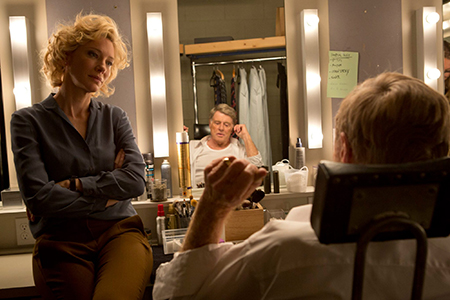In his new film Truth, director James Vanderbilt presents a story that actually played out on television. The movie follows newscaster Dan Rather and producer Mary Mapes (played here by Robert Redford and Cate Blanchett) beginning in 2004 when the two began working on a story for the CBS Evening News—based on what they believed were the military records of President George W. Bush—that would eventually have incredible repercussions for both of their careers.
Vanderbilt spoke to DuJour about tackling the story, finding his Rather and learning how the news is really made.
Hi there.
Hi. I’m apologizing in advance because I just dropped my son off at pre-school so I’m in the car in L.A. traffic. If I begin to curse very loudly and suddenly, it has nothing to do with you.
You don’t know that yet for sure.
Very good point.
So, how did this event end up in your hands and on the screen?
Interestingly, it didn’t sort of feel very world changing at the time, which I think is part of what is interesting about it. I knew as much about this as I think the average person would. Which was to say, I didn’t see the story when it originally aired. What I sort of knew about it was that CBS had run this story, and there were these documents that they put on the air. The documents turned out not to be true, and Dan Rather was fired as a result of it. That was kind of the breadth and depth of my knowledge.
And then I was reading an excerpt of Mary’s book in late 2005 or early 2006. She had written a book right after, and I was like, This is fascinating. Half of the stuff was what happened behind the scenes, and that would make a really interesting film.
How so?
I’ve always been fascinated with journalism. I’ve always been fascinated with stories about how the sausage is made. One of the really great things about movies is that you can learn how things work. This actually was a pivotal moment, because the big three anchors were Dan Rather and Peter Jennings and Tom Brokaw—they were sort of the voice of God—and now the media landscape has completely shifted. There are so many different places people get their news from. This felt like one of those sort of groundswell-shifting moments between those two places. That to me was a really interesting story to tell.
And how did you convince Mary Mapes to let you do this?
I read the excerpt and I called my manager and said, “I’m sure everybody’s going to be after this book.” He called me back and he said, “Actually, there aren’t that many people interested in this as a story.” It shows what a commercially minded person I am. But he contacted Mary’s book agent, who got back to us and said, “She’s actually really reticent to do anything with it.”
She was very, very wary. So I managed to get on the phone with her and I said, “Listen, I would love to come down to Texas and talk to you a little bit and get to meet you. And if at the end of that, you’re still not interested, totally cool. No harm, no foul, but I’d just like to be in a room with you.” So, I went down to Texas and we sat in Mary’s living room with her and her husband and we talked about everything but what happened. We talked about our favorite movies and how we grew up and different bands we liked. We got to know each other, and at the end of those two days, she was like, “Alright, you seem like an OK person. Why don’t we just give this a shot and see where it goes?”
Does making a movie about real people complicate things?
I’m always trying to be very aware that no matter what the film is about, these are real people and real families who are still walking around. And when the movie comes out, the fact that there is a movie is going to be part of their lives. I actually take that responsibility part of it very seriously, because the last thing I want to do is to mess that up for someone.
Dan Rather is a legend. So is Robert Redford. How did you decide on having one incredibly well known person play another?
I always felt like the movie’s big [casting choice] was going to be Dan Rather. I wrote the part for Redford. My thinking was—before he said yes or anything like that—I want to go after Robert Redford for this. The thing about Redford is that he’s been in our lives for a very long time—he’s been on our TVs, we know that voice, we know that face—so he has sort of the same thing that Dan has in a weird way, which is this presence and place in American life and history and culture. The idea was that I wanted to cast an icon to play an icon.

Robert Redford as Dan Rather and Cate Blanchett as Mary Mapes in “Truth”
These events have been examined so thoroughly over the years since they took place. What do you want moviegoers to walk of the theater with?
I once had a really great writing professor who said, “If you want to write a message, call Western Union. Your job is to tell a story.” Which I think is really good. I think it’s interesting how relevant that has become today, in terms of how we get served our news and where our news comes from now. The way I tried to build the movie is so that you walk out of it and you kind of get to decide. There’s a conversation to be had there about where we are culturally versus where they were in the story. If a conversation comes out of it, that would be the great win for me. Also, I hope it’s an entertaining two hours.







































